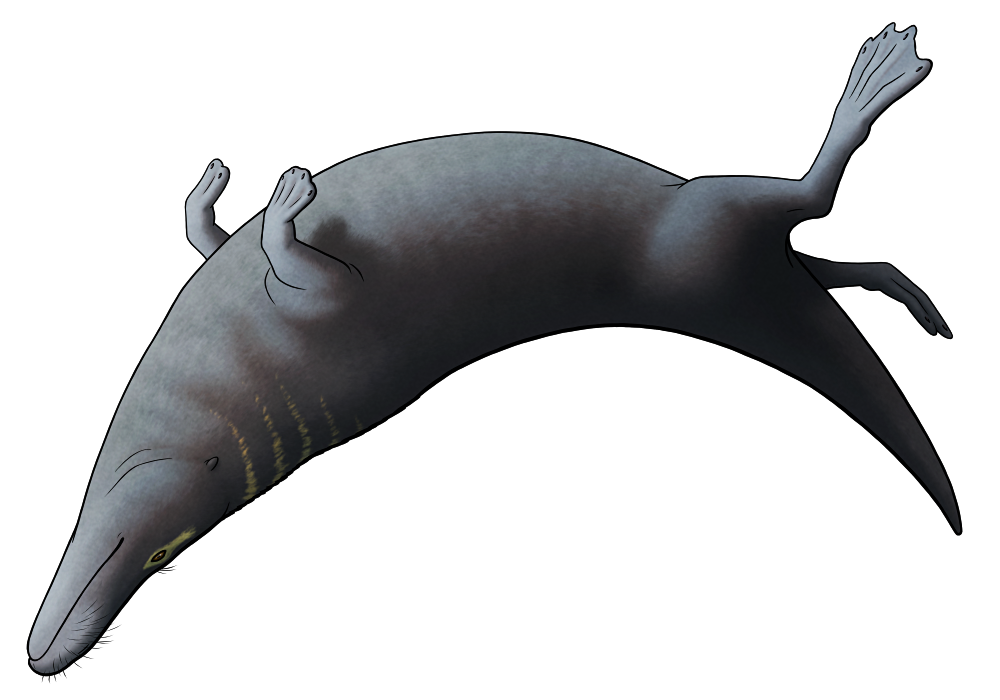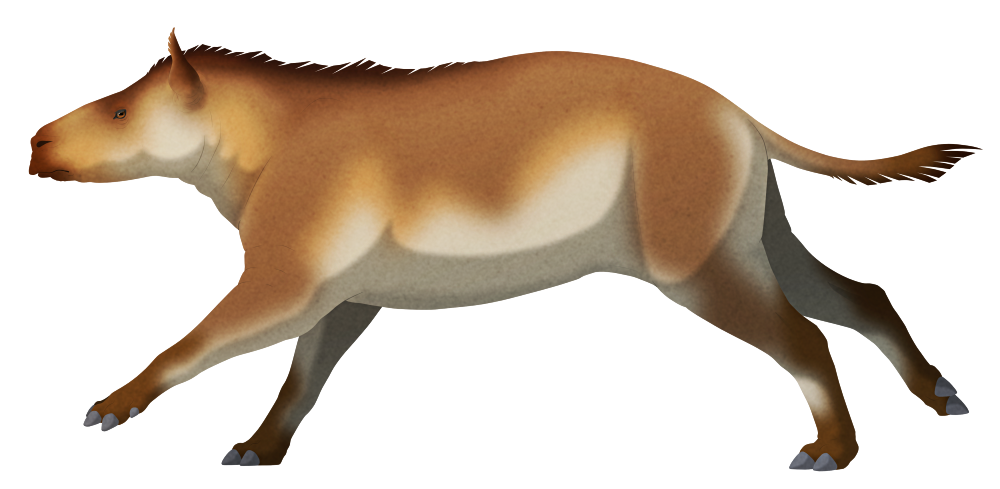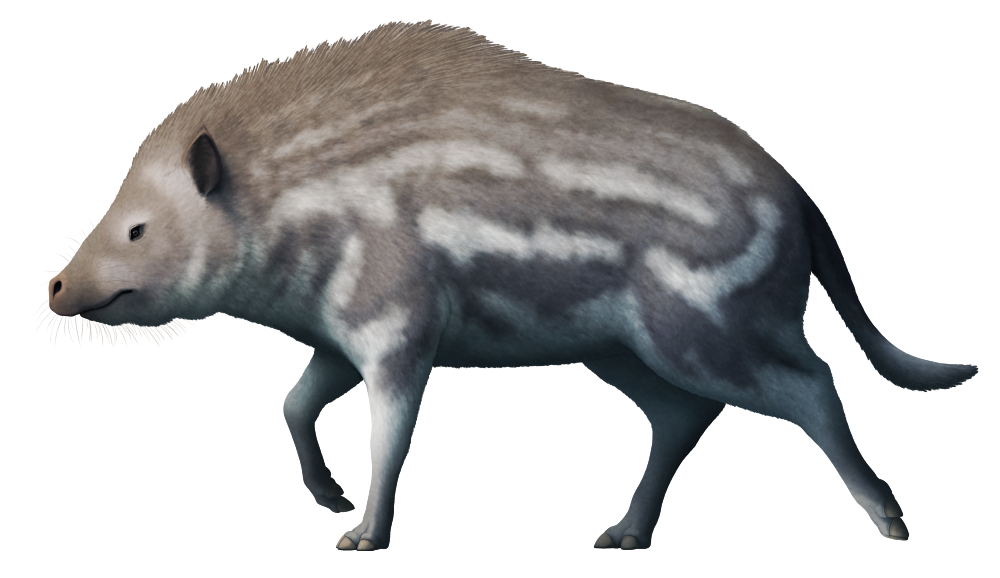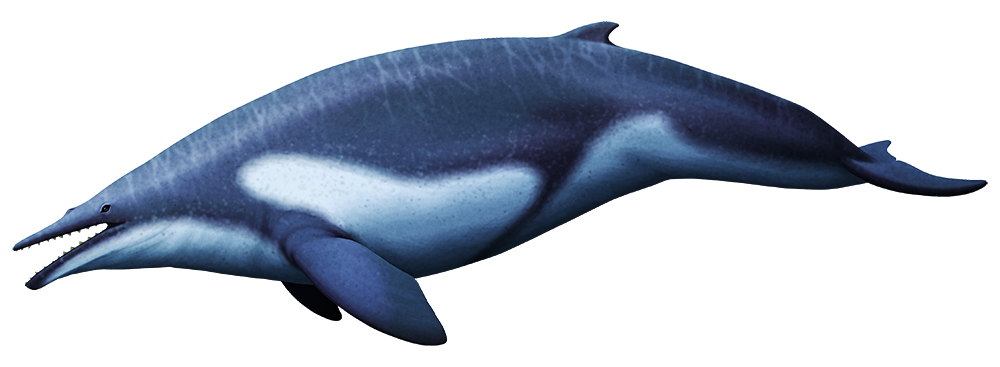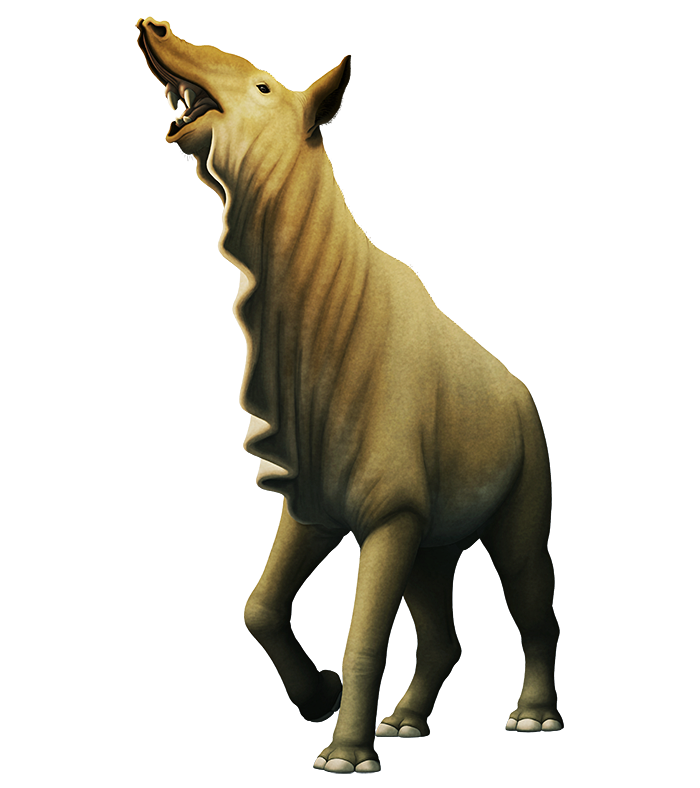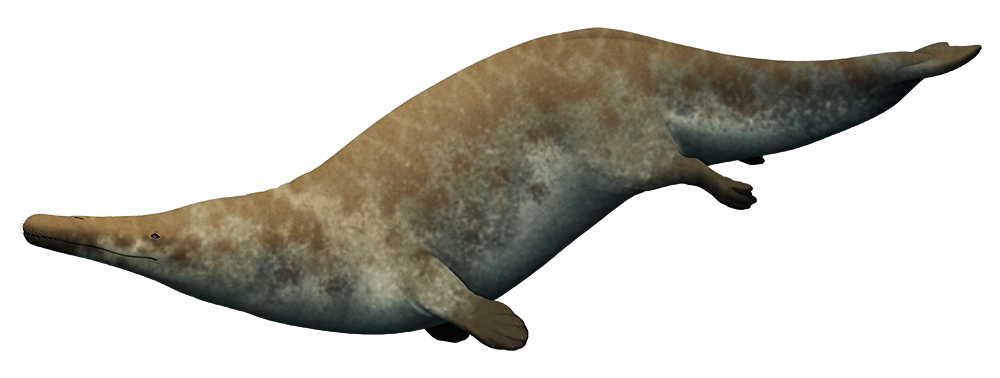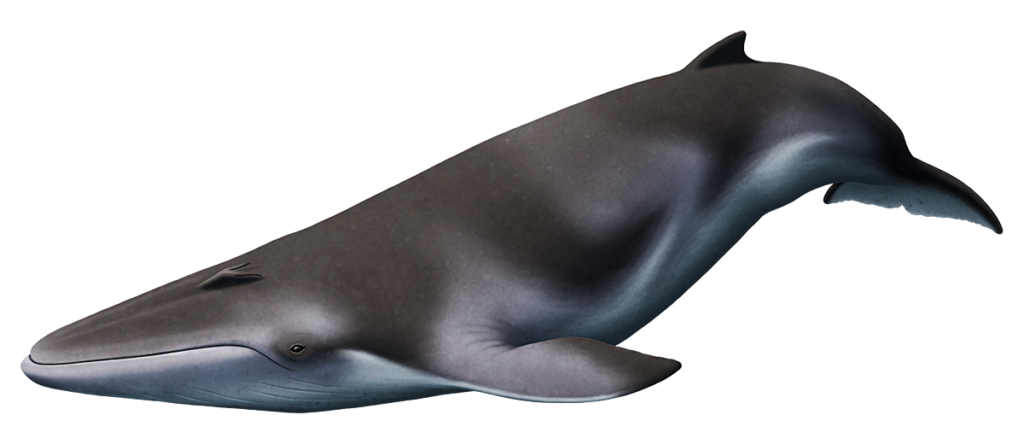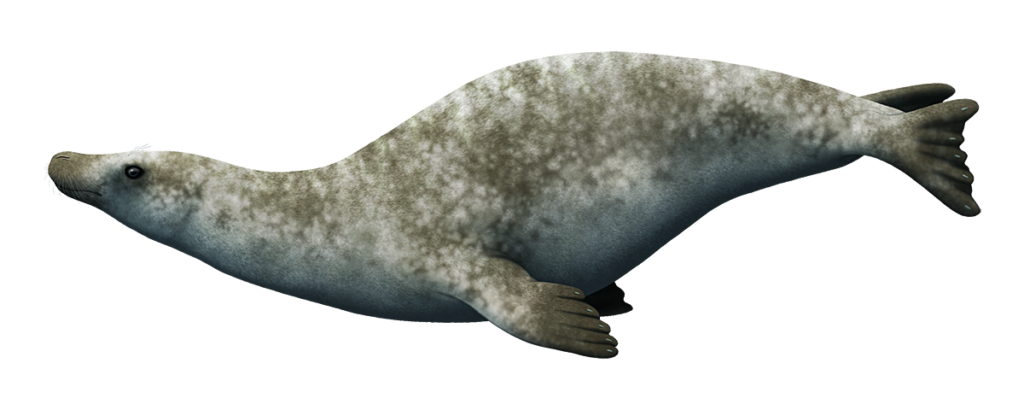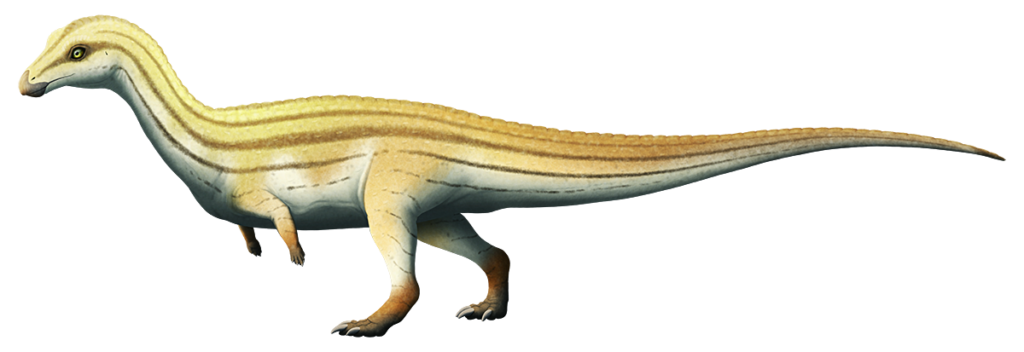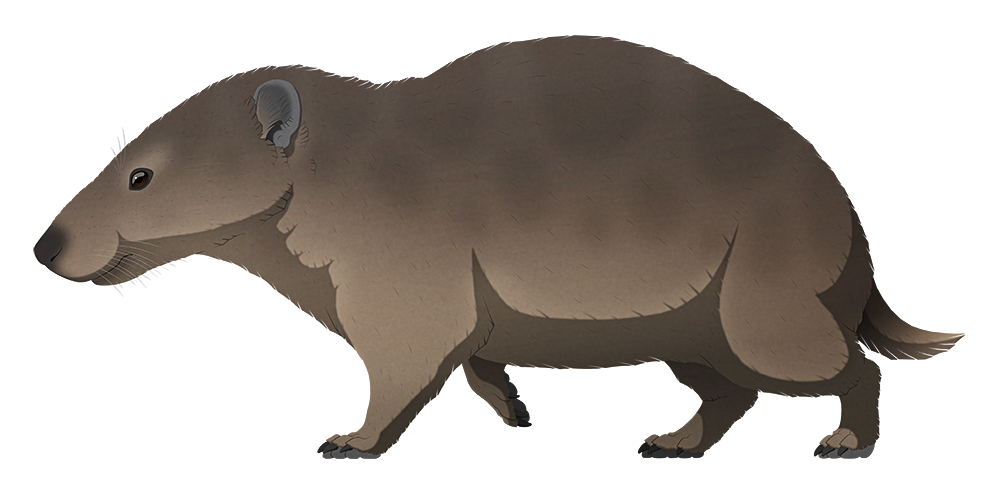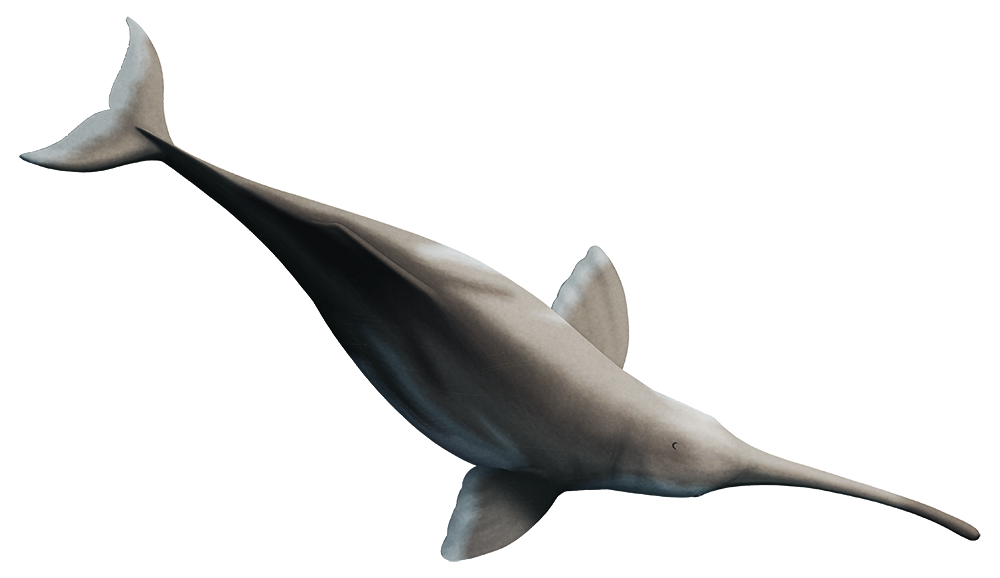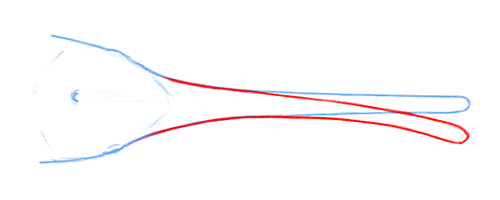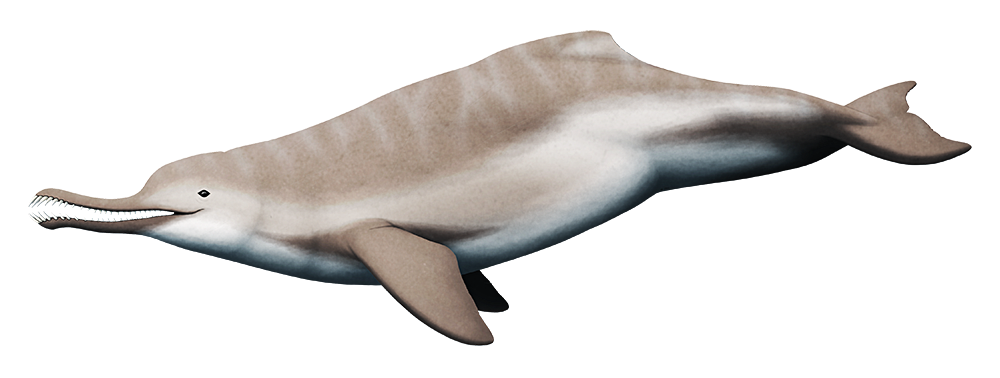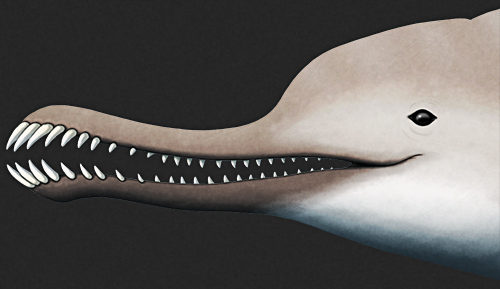Named after the canine-headed Ancient Egyptian god, Phiomicetus anubis is the first fossil cetacean to discovered, described, and named entirely by a team of Arab paleontologists.
Living during the mid-Eocene, about 43 million years ago, in a shallow sea-covered region that is now part of Egypt‘s Western Desert, Phiomicetus was an early protocetid – an amphibious foot-powered swimmer, at a transitional point in the evolution of whales from deer-like terrestrial animals to fully aquatic screaming torpedoes.
About 3m long (~10′), it had large jaw muscles and sharp teeth with wear patterns that suggest it was a raptorial hunter grabbing and snapping at prey with powerful bites. It would have probably tackled fairly big prey compared to other protocetids, hunting things like large fish, turtles, and even smaller whales in an ecological role similar to that of modern orcas.
Along with the distantly-related long-snouted Rayanistes it’s one of the earliest known whales from Africa, giving us further glimpses at a time period when early cetaceans were first dispersing out from the South Asian subcontinent via the ancient Tethys Sea.

